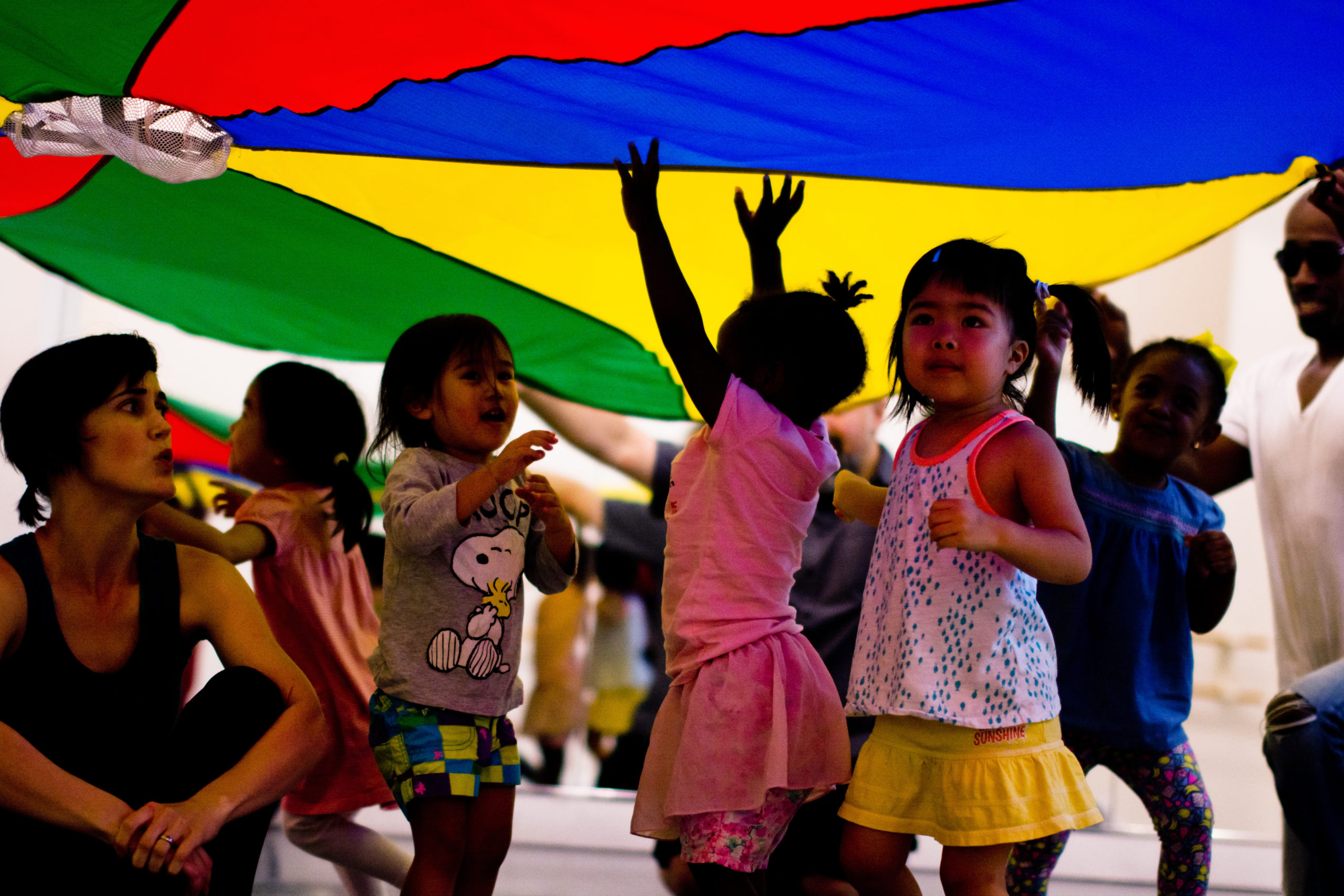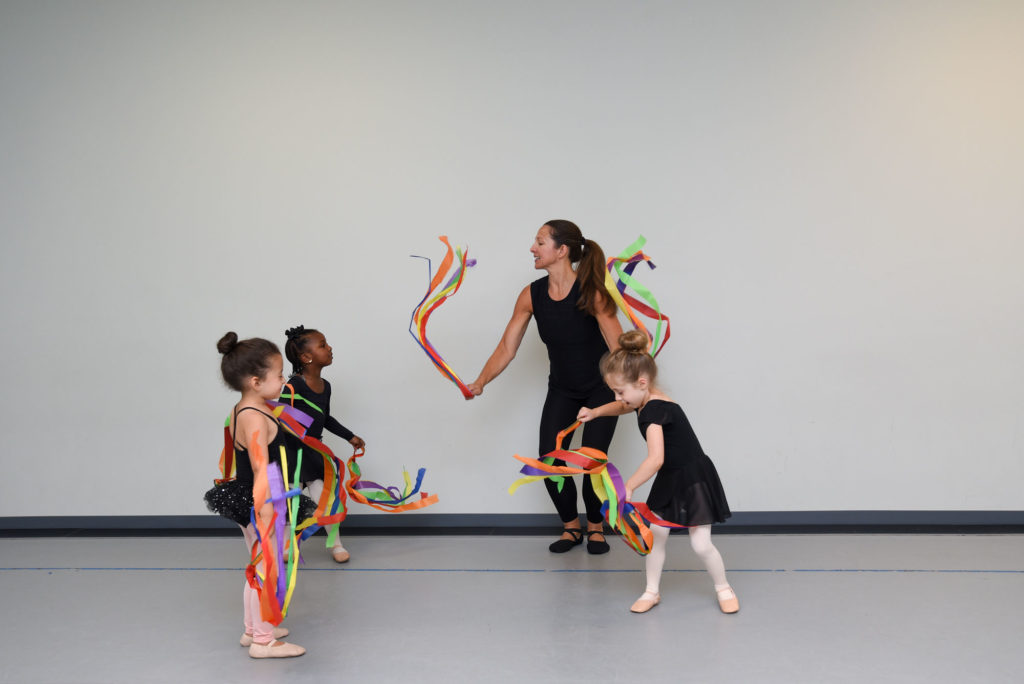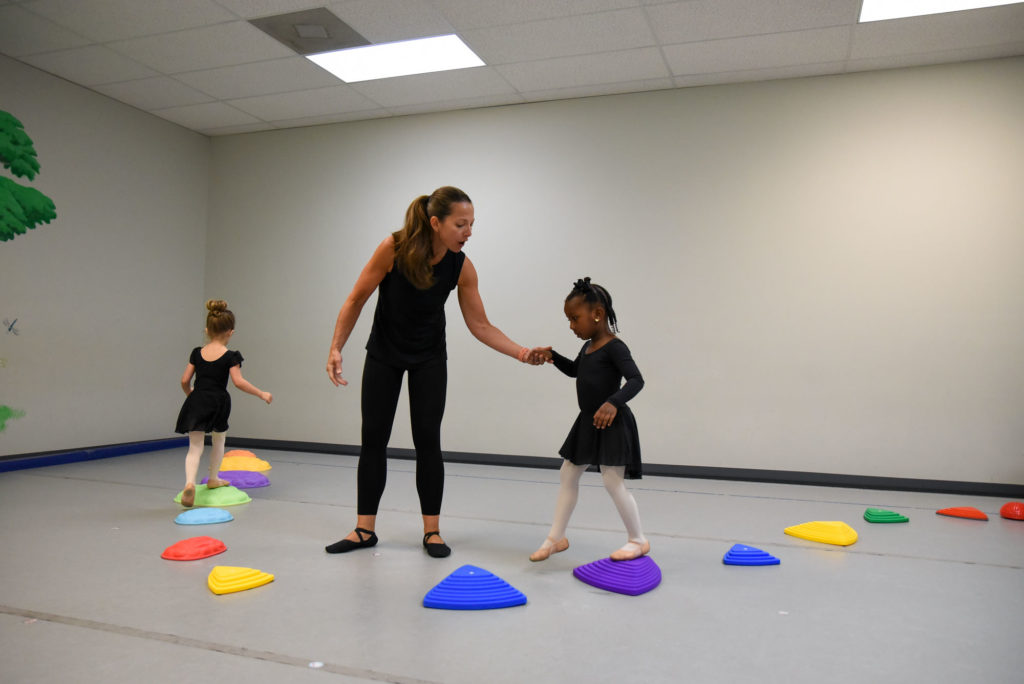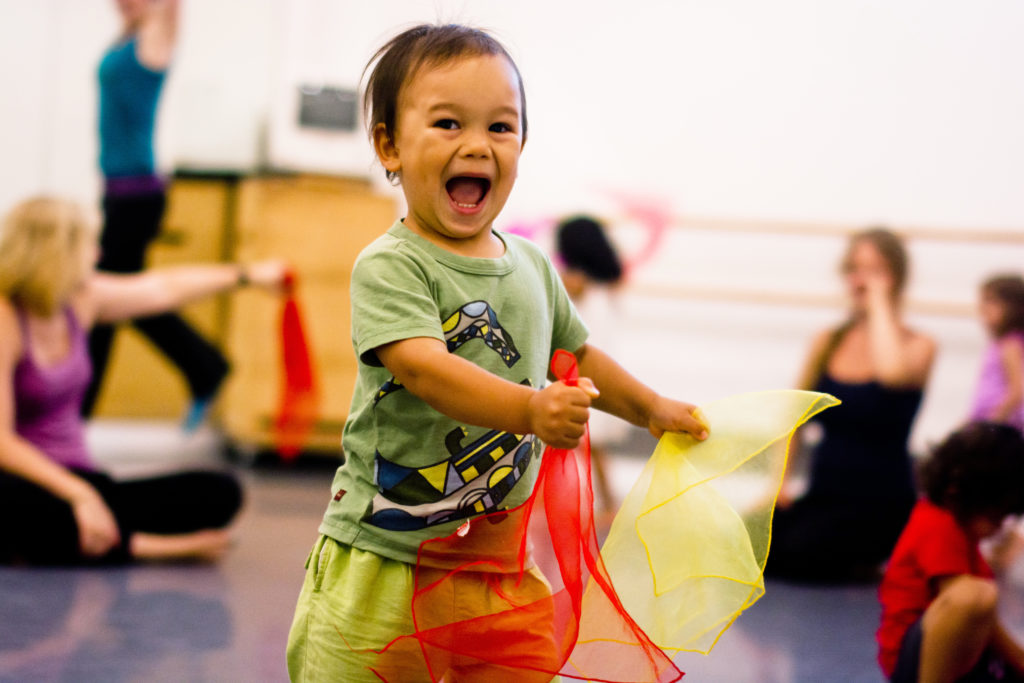
“You never know how a child is going to come out of their shell when you put a prop in their hand,” says Lisa Shed, owner of Lisa’s Dance Connection in Temple, Texas.
Props can draw in shy or reluctant students and give overexcited kids a way to release energy. They can encourage peer interaction. (“Find a friend who has your same scarf color!”) They can signal transition times. They can teach spatial concepts: inside, outside, over, under, between.
They’re also ideal for introducing dance concepts in an age-appropriate way. “Props can stimulate movement in children that may not have a large movement vocabulary,” says Janelle Barry, who teaches creative dance and parent and toddler movement classes at Brooklyn’s Mark Morris Dance Center. “Imagining the prop as different things almost tricks students into practicing certain motor skills. It’s physical while also being an artistic experience.”
Read on for ideas to help your littlest students get the most out of your classroom props.
Ribbons and Scarves
Kim Black, owner of Miss Kim’s Children’s Dance & Arts in Burlington, North Carolina, starts every class for young dancers with ribbon time. “We do rainbows, around-the-worlds, silly snakes, up and down, crossing the midline, spinning,” she says. “All of those movements feed the vestibular system”—the sensory system that contributes to balance and spatial orientation.

In terms of imaginary play, ribbons and scarves have unlimited potential. Ribbon sticks make great paintbrushes and magic wands. So do scarves—which can also serve as superhero capes, ghostly robes, princess dresses and peekaboo veils. Barry likes to have students scrunch scarves into small balls and then open their hands so the scarves pop out, like fireworks. “I could do an entire class with just scarves, and the kids would not get bored,” she says.
Spots, Hoops and Cones
Moveable spots can do a lot more than just tell children where to sit or stand. Kids can step, tiptoe or bunny-hop from one spot to the next. Hula hoops are also great for practicing locomotive skills, like jumping into and out of the circle. Black uses flat hoops to work on jetés: She’ll have children try to leap over them, pretending they’re volcanoes (to music from Moana) or piles of snowballs (to songs from Frozen). “I’ll set out three hoops and have the dancers go three at a time,” Black says. “We aren’t just working on jetés. We’re learning how to take class: dancing in groups, crossing the floor together, turning around and getting in line again.”

Setting up props for children to jump over, walk across and gallop between is also a great way to help them begin understanding sequence. “An empty dance studio is a blank canvas, and that can be intimidating,” Barry says. “An obstacle course breaks it into bite-sized pieces. Something like ‘Hop from dot to dot, then walk on tiptoes around the cones, and finish with a big leap over this stick’ develops the idea that a dance has a beginning, middle and end.”
Rhythm Props
“It’s never too early to introduce children to music and rhythm,” Barry says. At Mark Morris, every class has live accompaniment, but rhythm props such as egg shakers, sticks, drums, bells and tambourines can work with recorded music if live music isn’t an option. Have dancers play along to the beat. Then have them try playing half-time or double-time, or emphasize certain counts, such as the 1 and 3 in a 4/4 meter. Exploring rhythm in creative movement class will give students a foundation to build on as they advance in their dance training.
The Parachute
The parachute is Shed’s absolute favorite prop. Kids can walk in a circle, shake fast and slow, practice big up-and-down movements, and even turn around to hold the parachute behind their backs, which works different muscles and introduces the idea of backspace. Shed often pairs the parachute with seasonal props. “In the fall, I’ll put in fake leaves,” she says. “At Christmas, we’ll put Santa Claus in the middle. He dances while we say, ‘Ho, Ho, Ho.’” She says the parachute can also teach musicality: “We take cues from the music. If there’s a dramatic pause, we freeze, so their ears start to learn that music isn’t always the same. You have to listen.”

Parachute time is ideal for transitions. Shed pulls it out between ballet and tap in combo classes. Black likes to save the parachute for the end of class, but for a similar reason: Kids anticipate it, so it becomes a key part of their routine. Wherever it falls during a session, Barry says parachute time brings everyone together. “We’re in a circle. We see each other,” she says. “We have to work together to get a nice, fluid motion. It’s an exercise in cooperation.”
Prop Best Practices
Each time you bring out props, remind children of the rules. For example, “With rhythm sticks, as we hand them out, we say, ‘Hold them high over your head!’” says Shed. “‘We don’t play our sticks until everyone’s ready, and we don’t touch our sticks to our friends.’”

Certain items are best reserved for teachers. Black uses a toy wand to transform children into ballet dancers at the start of class, after ribbon time. “They stand on their spot and I tap their head,” she says. “Only Miss Kim gets to hold the sparkling wand. If they want to be touched by it, they have to be on their spot.”
Finally, remember that the same creative cues may not work for everyone in the room. “If I see a child repeatedly doing the same thing with a prop, I might walk over and say, ‘Did you know that this is actually a…?’ and give them a new idea,” Barry says. “I want them to be excited about moving with it. This isn’t a task to do—it’s an adventure to go on.”




